It had been over a year since I had pasta of any sort.
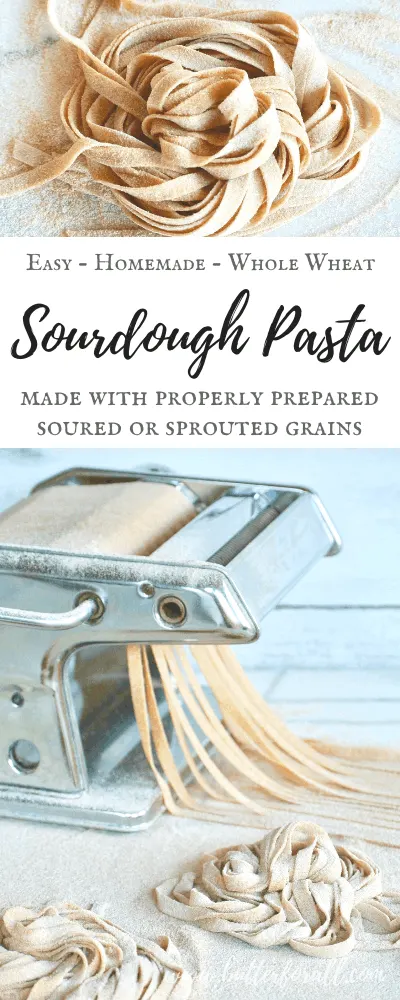
That just wouldn’t do. Pasta is such a comfort food, it actually feels unsettling to not have pasta for that long a stretch. So I decided to create a pasta recipe that uses all properly prepared grains.
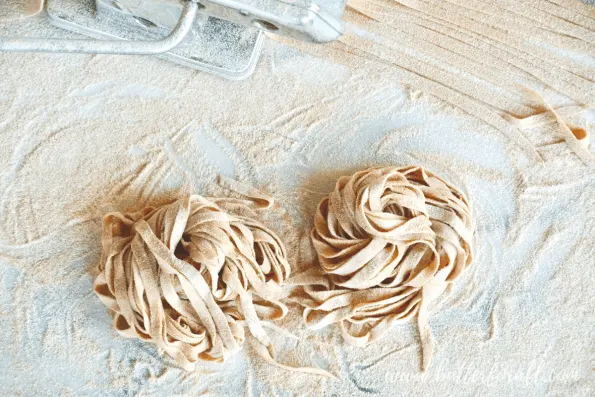
I’m passionate about the proper preparation of all foods, but especially inflammatory grains like wheat. When properly prepared, wheat is actually easy to digest and full of beneficial vitamins and minerals.
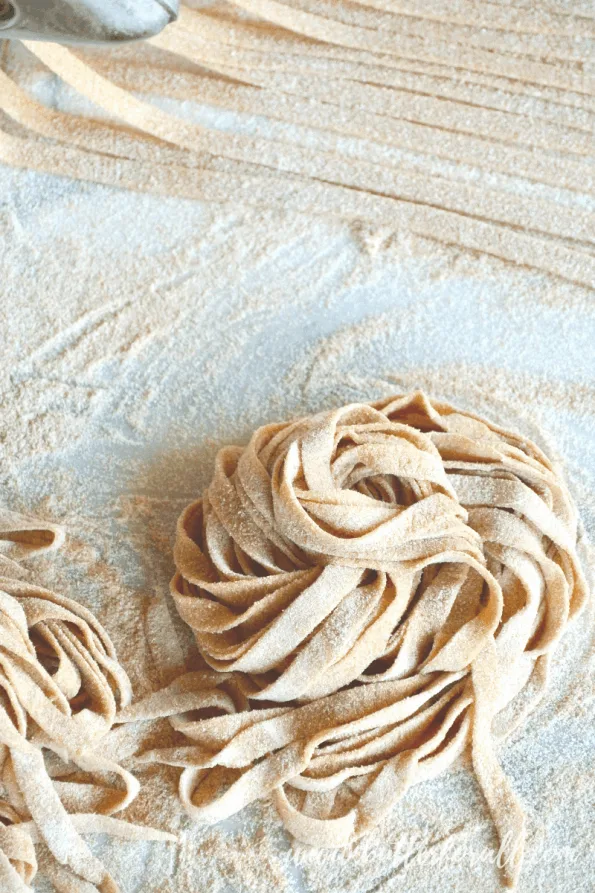
It is my pleasure to now present a recipe for whole wheat sourdough pasta that follows the guidelines for a nourishing diet.
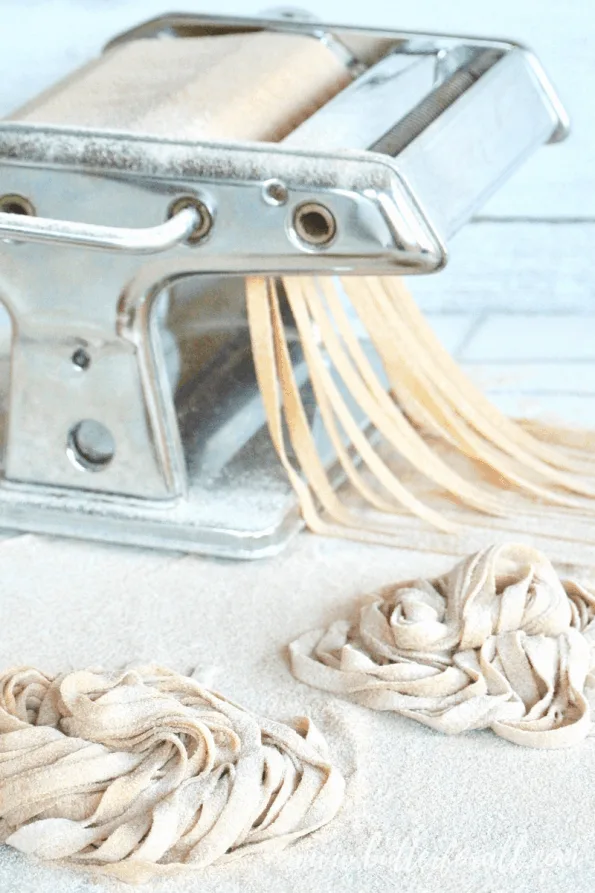
Whole Wheat Sourdough Pasta
The recipe is really very simple and only requires four real-food ingredients. It comes together quickly and can be prepared in the afternoon for dinner later that evening.
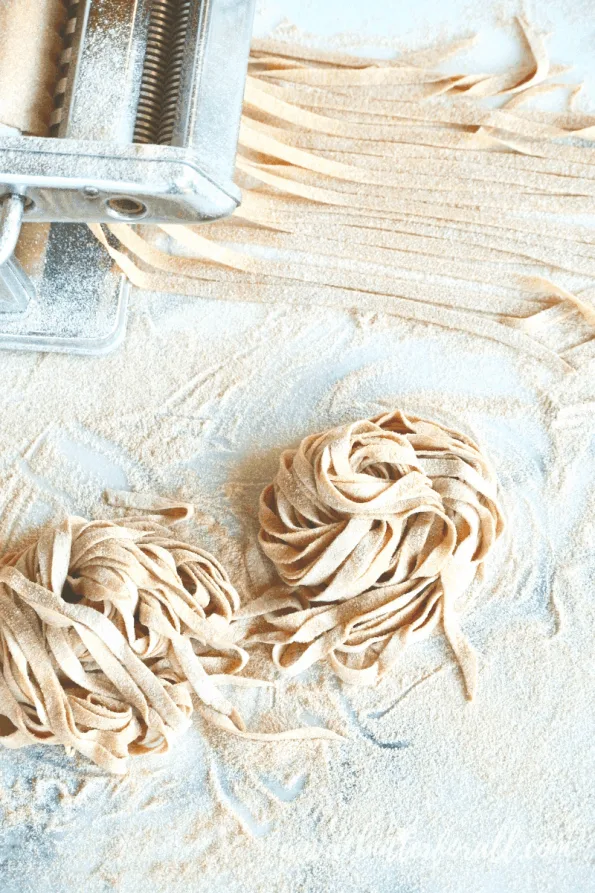
This dough can be made with sourdough starter discard and sprouted whole wheat if you want to eat it right away or it can be made with whole wheat flour and a long fermentation to neutralize phytic acid and unlock the nutrients in the wheat!
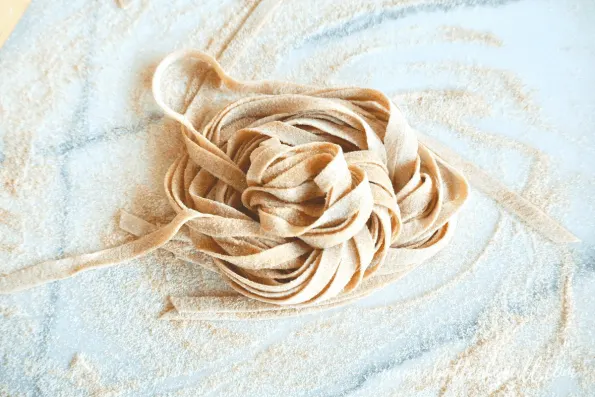
To read more about the health benefits of sourdough please refer to my guide: Demystifying Sourdough – Everything You’ve Ever Wanted To Know About Sourdough Starter – Why It’s Better for You – And How To Start One.
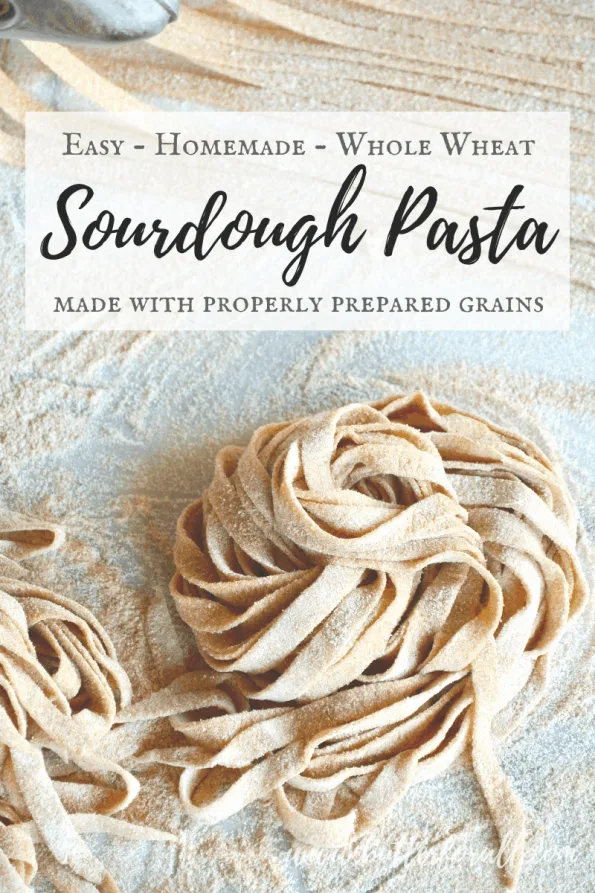
Sprouted Whole Wheat Flour vs Regular Whole Wheat Flour
Sprouted Flour: Like the souring that occurs with sourdough, the sprouting process changes the wheat grain from a hard-to-digest, inflammatory food source into one with boosted nutrition. Sprouting wheat increases vitamins B and C along with increasing carotene and neutralizing phytic acid that acts like an anti-nutrient. Let’s just say it’s a good thing!
Sprouted wheat can be used in this recipe if you would like to cook the pasta on the same day and don’t have time for a long slow fermentation!
Find Sprouted Whole Wheat Flour Now:
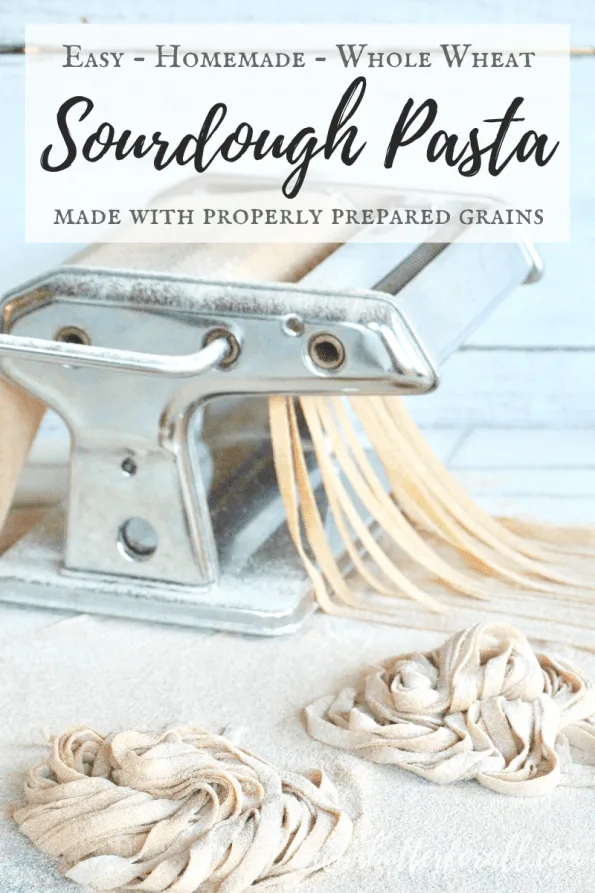
Whole Wheat or Heirloom Wheat Flour: Any wheat flour will work wonderfully in this recipe. Play around with different flours to find the one that you like the best. My personal favorite is a T200 Edison Wheat from Camas Country Mills. It is smooth and soft and has all the flavor of whole wheat!
When using fresh flour I recommend leaving the dough out at room temperature for at least 4 hours before further fermenting the dough overnight in the refrigerator. This will assure proper breakdown of all the hard-to-digest proteins and neutralize the vitamin- and mineral-robbing phytic acid.
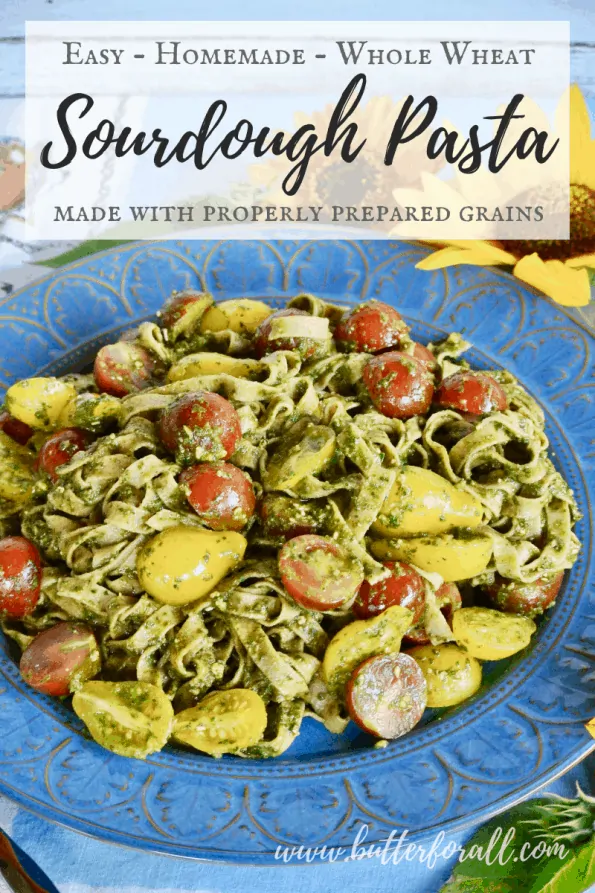
Watch Me Make It!
This easy sourdough pasta is made with organic sprouted or soured whole wheat for a delicious and quick nourishing meal.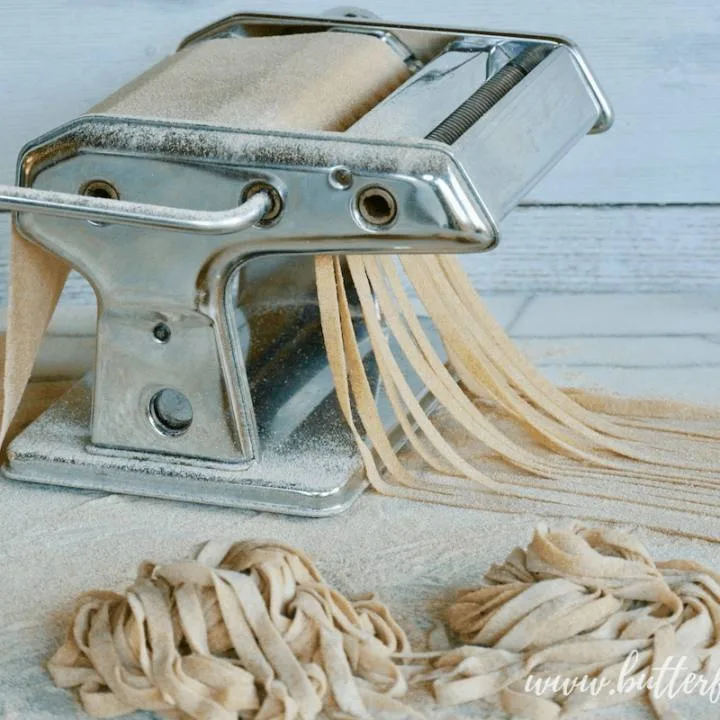
Homemade Whole Wheat Sourdough Pasta
Ingredients
For Your Work Surface
Instructions
If Using Sprouted Flour
If Using Fresh Flour
Rolling and Shaping the Pasta
Storing the Pasta

Want To Learn Everything About Sourdough?
Start with this free guide:
Demystifying Sourdough – Everything You’ve Ever Wanted To Know About Sourdough Starter – Why It’s Better For You – And How To Start One
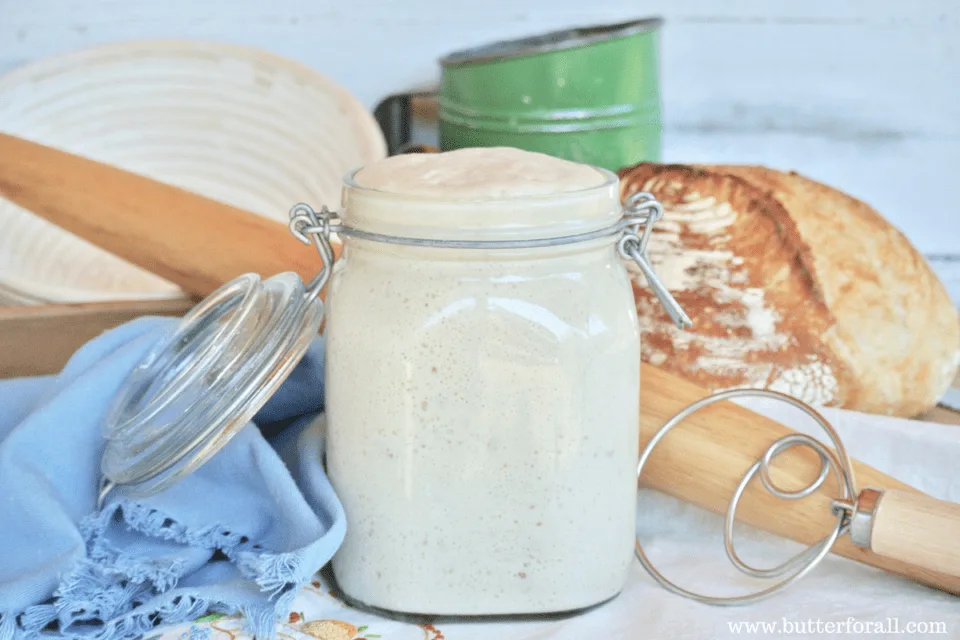

Chris
Friday 30th of December 2022
This is by far the best recipe. I have made it a few times now and shared with my family. Now everyone only wants to eat this pasta and not store bought. It does not make you feel bloated and is so light. I double the recipe and air dry and vacuum seal it. It lasts so long if I hide it.Thank you for sharing all your great recipes and your videos are so beneficial.
Butter For All
Friday 30th of December 2022
Hi Chris!
I'm so happy to hear it. I really appreciate you using my recipes and leaving feedback. The notes about storage are very helpful to other readers! Thank you!
Courtney
Tiffany
Saturday 15th of January 2022
Just made these noodles for supper with a homemade Alfredo sauce. Best homemade noodles I've made yet! Good for our guts, easy to make, and delicious.
Butter For All
Thursday 20th of January 2022
Oh Tiffany!
It's too late at night for me to be thinking about homemade sourdough noodles with Alfredo! You devil! YUM!
Glad they were a success!
Courtney
Morena
Tuesday 4th of January 2022
Hi! In step 1 of "Rolling and Shaping the Pasta" it states that the dough should be divided into 4 equal sections. Could I freeze or put in the fridge one or two of those sections to make fresh pasta again at some other time instead of doing it all and drying the amount I won't be using yet?
Butter For All
Sunday 9th of January 2022
Hi Morena!
Yes, this dough does very well in the fridge for up to a week. You can also freeze it as needed. The texture changes a little after being frozen, but it shouldn't be a problem. Make sure to give the dough room to expand without drying out if you keep it in the fridge!
Courtney
anna
Thursday 5th of August 2021
I had never made any kind of pasta before but I wanted to try this with my new sourdough starter. The process seemed to go great, but it was an absolute fail for me when consumed. The pasta flavour was really gross to me - very sour, and the texture was kind of slimy and floppy. I'm not sure where I went wrong. My starter is 100% hydration made with AP flour. I didn't have sprouted flour so I used my rye WW and did the 4 hours on the counter and overnight in the fridge. I didn't make the pasta in the morning though, I made it at dinnertime so in total it spent about 22 hours in the fridge. Maybe that was the problem? I also ended up not even cooking them right away, I floured them and let them dry a bit on the counter and then put them in the fridge and cooked a portion the next day. I put it in the water for only 2 minutes while I was mixing my carbonara and when I pulled it out it was already limp and mushy. The next day I tried again and basically only dunked the noodles in for like 30 seconds to warm them up. It was better, less mushy. but still super soft. no al dente possible for these for me. And still, the flavour was really strong and unpleasant. I'm so sad!
anna
Monday 9th of August 2021
@Butter For All, thanks so much for the reply! I had no idea that rye flour was different than regular WW flour. I just got the only WW flour that was available from a local producer. I will see what else I can find. Thanks again!
Butter For All
Sunday 8th of August 2021
Hi Anna,
Rye flour has a completely different flavor and texture profile that other kinds of wheat. It's extremely sticky and hard to work with as pasta, has a lower gluten percentage which effects texture, and if it was really sour I'd say the starter was already too sour or the dough fermented too long. Try feeding your starter a few times to refresh it, and make the recipe as written with either sprouted WW (to consume immediately) or regular WW flour (if you plan to further ferment the pasta dough in the fridge).
Good luck, I'm sure you will enjoy it if you follow the recipe!
Courtney
PS. 22 hours in the fridge should not be a problem. I've kept fresh pasta much longer than that, although it will get more sour over time.
Samantha Delapenha
Sunday 21st of March 2021
Hi!! Making this tonight was wondering if I could make with evoo instead of egg to make vegan ?
Butter For All
Monday 22nd of March 2021
Hi Samantha,
I have never tried it with Olive oil but I think you will be fine. Lots of pasta is made with just water even, so maybe half and half to start with. Please let me know how it turns out!